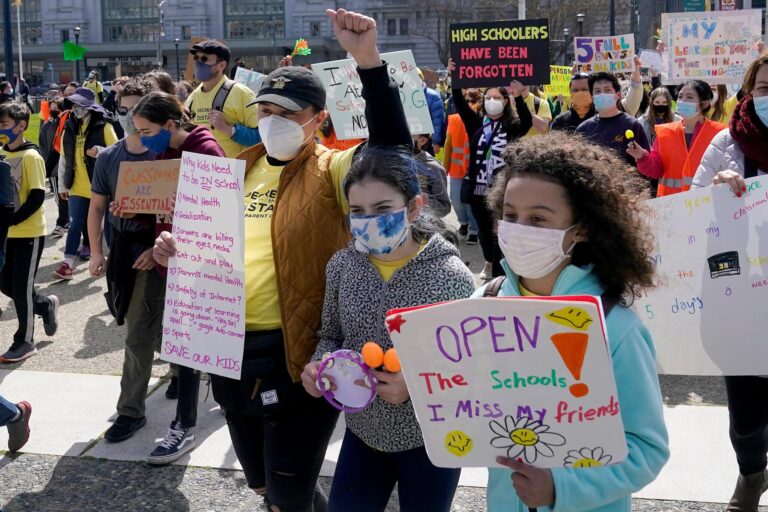San Francisco Schools Reopening Debate Ignites Deep Community Divisions
As San Francisco moved toward reopening its public schools amid the ongoing pandemic, tensions flared, exposing a city deeply fractured over public health and education priorities. Parents, educators, and political leaders found themselves at odds as debates intensified over safety protocols, hybrid learning models, and the pace of returning to in-person instruction. Proponents of reopening emphasize the critical need to address student learning loss and social-emotional well-being, while opponents worry about the health risks to children, staff, and vulnerable community members.
These clashes have manifested in frequent school board meetings marked by heated exchanges and protests, reflecting broader societal divides. Several community voices raise concerns about equitable access to technology, the effectiveness of remote learning, and potential long-term impacts on students. Among the core points of contention are:
- Health & Safety Protocols: Debates over mask mandates, social distancing, and vaccination requirements.
- Academic Impact: Evaluations of learning loss and the suitability of hybrid or fully in-person instruction.
- Community Trust: Growing mistrust between families and school officials, complicating collaborative solutions.
| Stakeholder Group | Primary Concern | Preferred Solution |
|---|---|---|
| Parents advocating reopening | Academic setbacks and social isolation | Immediate hybrid or full reopening |
| Teachers’ unions | Health risks and working conditions | Enhanced safety protocols, delayed reopening |
| Public health experts | Virus transmission and vaccination rates | Data-driven incremental reopening |
Health Risks and Educational Imperatives Clash Amid Pandemic Uncertainty
As schools in San Francisco grappled with reopening plans, concerns over *health risks* dominated discussions. Parents and educators faced the daunting task of weighing the dangers of COVID-19 exposure against the urgent need for in-person learning. Vulnerable populations, including students with underlying conditions and staff with pre-existing health issues, intensify the debate. Public health officials emphasized the importance of mitigation strategies such as mask mandates, frequent testing, and improved ventilation — yet these measures failed to quell fears completely.
Amid this backdrop, educational imperatives clashed sharply with public health priorities, sparking widespread division across communities. Key points of contention included:
- Equity concerns: Remote learning disproportionately affected low-income families lacking resources.
- Academic setbacks: Many students experienced significant learning loss during closures.
- Mental health pressures: Isolation contributed to increased anxiety and depression among youth.
| Factor | Impact on Reopening Debate |
|---|---|
| Health Precautions | Divided community trust |
| Learning Loss | Urgency to resume in-person classes |
| Digital Divide | Calls for hybrid education models |
| Mental Health | Priority for supportive services |
Parents and Educators Voice Frustrations Over District Leadership and Communication
Parents and educators have expressed growing dissatisfaction with the district’s handling of communication and decision-making throughout the reopening process. Many feel that announcements were often late, contradictory, or lacking in clear guidance, leaving families confused and anxious. Several community members voiced concerns over the absence of transparent collaboration between district officials and school staff, leading to a profound sense of distrust. This communication breakdown exacerbated an already tense environment, where questions about health protocols and instructional quality went largely unanswered.
The frustration has crystallized around several key issues:
- Inconsistent messaging on safety measures and reopening timelines
- Limited opportunities for parents and teachers to provide input before decisions were finalized
- Delayed dissemination of critical information related to testing and quarantine procedures
- Unequal access to resources for remote learning support
These challenges contributed to a polarized atmosphere, with many educators feeling underappreciated and parents fearing for their children’s well-being. The collective outcry highlights the urgent need for a more inclusive leadership approach and clearer communication strategies moving forward.
Pathways Forward Balancing Safety Protocols with Urgent Learning Needs
As the debate over reopening schools intensifies, San Francisco faces the complex challenge of reconciling health precautions with the immediate educational needs of its children. Stakeholders, including educators, parents, and public health experts, emphasize the importance of layered safety measures—from mandatory mask-wearing and improved ventilation to regular testing and smaller class sizes—to reduce viral transmission without compromising learning quality. Yet, the urgency to address growing educational gaps demands swift action, forcing districts to innovate rapidly in how instruction is delivered.
To chart a sustainable path forward, city officials and school boards are considering a flexible, phased approach that would:
- Prioritize in-person learning for younger students and those with special needs
- Leverage hybrid models to accommodate varying risk levels
- Invest in resources for remote learning where in-person is not feasible
- Engage community voices to ensure transparency and trust
| Measure | Benefit | Challenge |
|---|---|---|
| Mandatory Masks | Reduced transmission risk | Compliance enforcement |
| Improved Ventilation | Better air quality | Funding for upgrades |
| Regular Testing | Early detection of cases | Logistical complexity |
| Hybrid Instruction | Flexible learning options | Equity in access |




